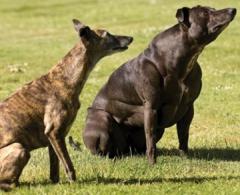
This Article From Issue
September-October 2007
Volume 95, Number 5
Page 405
DOI: 10.1511/2007.67.405
This roundup summarizes some notable recent items about scientific research, selected from news reports compiled in Sigma Xi's free electronic newsletters.
Fertile Ground
Biogeochemists have suspected for many years that the reactive nitrogen compounds spewing into the air from tailpipes and smokestacks may be acting to fertilize boreal and temperate forests. If so, this form of atmospheric pollution may enhance forest growth, which in turn sequesters a considerable amount of carbon dioxide that the trees take in from the air. A new analysis of nitrogen fluxes across Europe and North America lends support to this notion, showing a good correlation between the amount of nitrogen deposited in a particular area and the amount of carbon sequestered. The investigators concluded that the amount of carbon stored in this way "appears to be overwhelmingly determined by the additional input of N induced by human activities."
Magnani, F., et al. The human footprint in the carbon cycle of temperate and boreal forests. Nature 447:848-852 (June 14)
New to the Menu
Specialists have debated whether chickens (Gallus gallus) could be found in the Americas in pre-Columbian times and, if so, what route they followed to get there. New work indicates that these birds indeed arrived before 1492 and that they came from the west rather than from the east, carried across the Pacific by Polynesians. The evidence comes from the dating and DNA analysis of a single chicken bone recovered from the Arauco Peninsula of Chile. Presumably, archaeologists and other scholars will now turn their attention to the origin of barbecue sauce.
Storey, A. A., et al. Radiocarbon and DNA evidence for a pre-Columbian introduction of Polynesian chickens to Chile. Proceedings of the National Academy of Sciences of the U.S.A. 104:10335-10339 (June 19)
All in the Family
Since the time of Francis Galton, observers have been intrigued by the apparent effects of birth order, firstborns seeming to be smarter and do better for themselves in life than their siblings. Modern psychometric testing indeed confirms that, on average, eldest children have higher IQs than those who follow. It's long been hypothesized that firstborns enjoy greater parental nurturing and stimulation, thus enriching their neurological development. A competing theory posits that firstborns gain their advantage in utero, later siblings suffering the effects of maternal antibody attack on the fetal brain (a mechanism that, like rhesus incompatibility, would not affect the first child in a family). New research lends support to the first explanation. A detailed study of Norwegian men shows that those who became the oldest children in their families because an elder sibling died have, on average, IQs similar to firstborns. Those who became the second oldest because of such a death have IQs similar to secondborns. So here, at least, nature appears to take a back seat to nurture.
Kristensen, P., and T. Bjerkedal. Explaining the relation between birth order and intelligence. Science 316:1717 (June 22)
Catty Behavior
Genetic analysis of almost 1,000 domestic cats and their wild progenitors has revealed that today's feline pets all descended from a handful of animals that lived in the Middle East some 9,000 years ago. The process of domestication probably began when wild cats started feeding on rodents that were living off the grain stores of ancient settlements in the Fertile Crescent. The early farmers were happy to be rid of the pests and thus tolerated the cats, which over time abandoned their aggressive wild-born behaviors in favor of living in close association with people. No wonder our feline friends lose their aloofness at feeding time. Maybe in another millennium or two, they'll learn how to catch Frisbees.
Driscoll, C. A., et al. The Near Eastern origin of cat domestication. Sciencexpress (June 28)
Mysterious Methane Measurements
Atmospheric scientists were surprised last year by results published in Nature that appeared to show that plants emit considerable amounts of methane, a potent greenhouse gas. If true, the contribution of plants to the global methane budget would have to be accounted for in considerations of how this heat-trapping gas influences Earth's climate. Some atmospheric scientists were, however, reluctant to accept what was published in Nature, suspecting that the technique used to extrapolate from laboratory measurements to the whole planet were flawed. Now a new study suggests that the measurements themselves were in error and that healthy plants don't, in fact, give off methane. The new work used a carbon-isotopic tracer to test for methane emissions and found essentially none.
Dueck, T. A., et al. No evidence for substantial aerobic methane emission by terrestrial plants: A 13C-labelling approach. New Phytologist 175:29-35 (July)
Cutting the Cord
With the proliferation of WiFi networks, laptop computer users have been able to stay connected to the Internet without having to be tethered in place by troublesome Ethernet cables. We can roam freely around our favorite hotspots, sending e-mails and surfing the Web to our heart's content—at least until the batteries run out. A team from MIT is now working on a scheme that may allow such wireless activity to continue indefinitely by sending power wirelessly to a laptop computer or other mobile device. The MIT engineers were able to transmit power at about 40 percent efficiency over distances in excess of 2 meters using the mutual induction between some cleverly designed coils.
Kurs, A., et al. Wireless power transfer via strongly coupled magnetic resonances. Science 317:83-86 (July 6)

American Scientist Comments and Discussion
To discuss our articles or comment on them, please share them and tag American Scientist on social media platforms. Here are links to our profiles on Twitter, Facebook, and LinkedIn.
If we re-share your post, we will moderate comments/discussion following our comments policy.